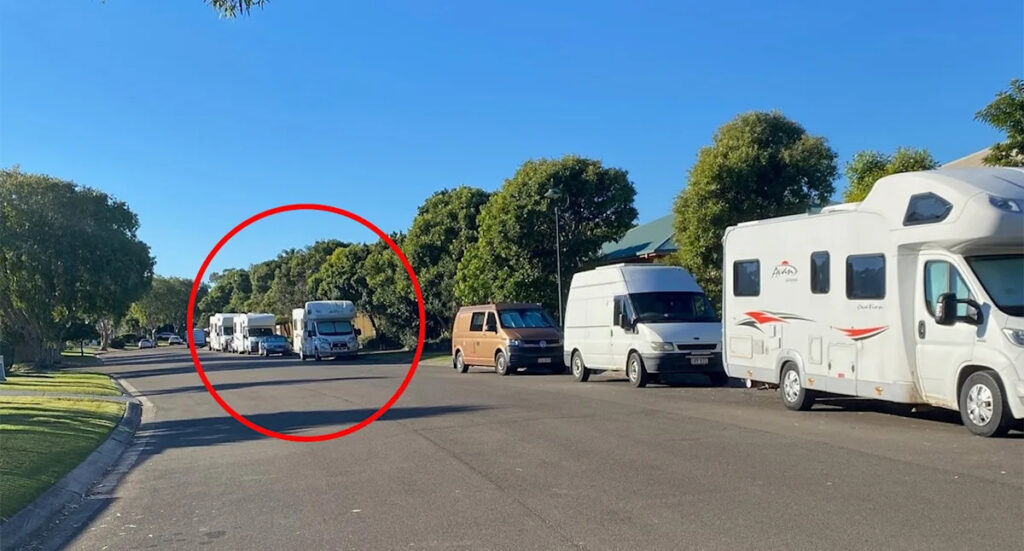
Locals in one of Australia’s most popular tourist regions are calling on lawmakers to tighten regulations as caravans, motorhomes, and trailers increasingly congest suburban streets. This issue has become a nationwide concern, with numerous communities raising alarms in recent weeks.
On the Sunshine Coast in Queensland, residents warn that the proliferation of these vehicles is preventing access to crucial parking spots, exacerbating an already limited space situation. A petition, now signed by 1,167 people, has been created to urge state and local governments to take action.
Parking Dilemma Escalates on the Sunshine Coast
The petition, initiated by a Palmview resident, demands the Sunshine Coast Council introduce stricter regulations for long-term and unsafe parking of caravans, campervans, motorhomes, boats, and trailers on public streets. This move was prompted after the resident found two large vans parked on either side of his driveway, obstructing visibility and access.
According to data from the Sunshine Coast Council, approximately 700 “service requests” related to this issue are received annually. Current regulations prohibit vehicles exceeding 7.5 meters in length or 4.5 tonnes in weight from parking in built-up areas for more than an hour unless actively loading or unloading. Parking on verges, nature strips, and footpaths is also banned, with a requirement to leave at least three meters of roadway clear.
However, many residents believe these measures are insufficient. The council acknowledges the community’s frustration but cites limited powers under the Transport Operations (Road Use Management) Act 1995.
“While Sunshine Coast Council has explored intervention options, the Transport Operations (Road Use Management) Act 1995 does not provide practical options for local governments to address this issue without affecting all vehicles parked in the local government area,” a council spokesperson said.
Under Queensland road laws, registered vehicles, including caravans, trailers, and boats, can remain parked on public roads indefinitely if they comply with parking restrictions. Despite these limitations, the council is pursuing action, endorsing a motion to be presented at the Local Government Association of Queensland (LGAQ) Conference on the Gold Coast from October 20 to 22.
Australia’s Problem with Congestion on Suburban Streets
This development follows complaints from a Rockhampton resident about a “parking epidemic” creating safety hazards for retirees, people with mobility issues, and mothers with prams. In September, Moreton Bay residents called for towing vehicles parked too long on suburban streets, after a caravan obstructed road works.
Noosa Council responded by more than doubling some fines in a crackdown on illegal overnight camping and unauthorized parking. Meanwhile, Sydney’s Northern Beaches Council has been investigating ways to address the issue, considering new parking signage and rules.
The problem has been simmering for some time. In 2023, a boat legally parked on a street was vandalized with graffiti, prompting the owner to defend their right to park there.
Implications and Future Steps
The growing discontent highlights a broader issue of balancing tourism and local needs. As more Australians embrace road trips and mobile living, suburban areas face increasing pressure to accommodate these lifestyle changes without compromising local residents’ quality of life.
Experts suggest that a comprehensive review of current parking laws and community consultation could lead to more effective solutions. Potential measures include designated parking zones for recreational vehicles and increased enforcement of existing regulations.
As the Sunshine Coast Council prepares to present its motion at the LGAQ Conference, the outcome could set a precedent for other regions grappling with similar challenges. The situation underscores the need for innovative approaches to urban planning that consider both the benefits and drawbacks of mobile living in suburban areas.





